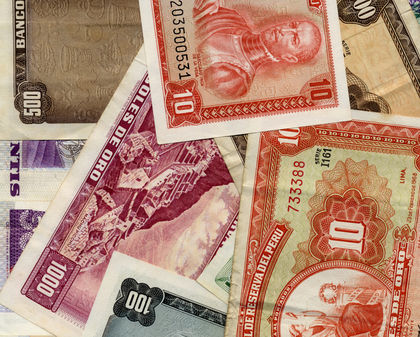Peru - Economy

Since World War II, the Peruvian economy has developed rapidly, exhibiting a rate of growth that has been among the highest in Latin America. The strength of Peru's economy lies in the diversity of its natural resources. Silver and gold were the prized commodities of colonial Peru. In more recent times, lead, copper, zinc, iron ore, and since the late 1960s, petroleum have become important export earners. Fishing, including the production of fish meal, has become a major undertaking. Agriculture, which occupies about 4.9% of the work force, is sharply divided between two sectors: small-scale farming, producing food crops for subsistence and the domestic market, and export-oriented production.
Policies from 1960 to 1990 aimed at social reform but worsened and perpetuated poverty. Repeated experiments in social engineering created economic and institutional uncertainty and a prolonged decline in governance. Government spending grew steadily in the 1980s—until it collapsed in 1989—but spending in the production of public services fell. As a result, there was a steady degradation of the civil service and the provision of public goods that undermined productivity, fostered anarchy and public turmoil, and, ultimately, made poverty reduction impossible.
By 1990 per capita income was below that of 1966; political violence was claiming 3,000 lives each year; tax collections were less than 5% of GDP; and prices had increased by a factor of 27 million over three decades. In fact, Peru's economy had all but collapsed. It was the finale of 30 years of misguided policies, economic mismanagement, and since 1980 rampant and escalating terrorism.
Since 1990 and the Fujimori regime, the government has pursued a bold reform agenda. It has strengthened the authority of the state throughout the country, defeating terrorism and fighting drug trafficking. It liberalized interest rates, the exchange rate, and international capital flows. It established the independence of the central bank and eliminated credit from the central bank to the government. It increased competition by opening the economy to trade with the rest of the world and eliminating public monopolies and price controls. It improved labor market efficiency by addressing tenure regulations and establishing more flexible terms for probationary periods and fixed-term contracts. It facilitated private ownership of land and developed a vast privatization program. It eliminated the state monopoly in social security and established the framework for a private pension fund system. And it eliminated public development banks and state intervention in the allocation of credit.
Since the reform program, Peru has enjoyed macroeconomic success, but the reforms have done little to alleviate poverty. Between 1993 and 1996, Peru's economy grew by 32%, in part due to the privatization of state companies; but thousands of Peruvians lost their jobs as a result. The rate of inflation fell steadily as a result of stringent monetary and fiscal measures. It dropped from over 7,650% in 1990 to about 40% in 1993; and 4% in 2000, one of the lowest inflation rates in Latin America. The Peruvian economy grew by 7.3% in 1997, but in 1998 and 1999 growth slowed to an estimated 1.8% and 3.8% respectively. A combination of El Niño weather that hurt the fishing and agricultural industries, and the Asian financial crisis which depressed metal prices, contributed to the Peruvian economic downturn. Growth for 2000 was forecast at over 5%.
for the 3rd time.
wonderful site.